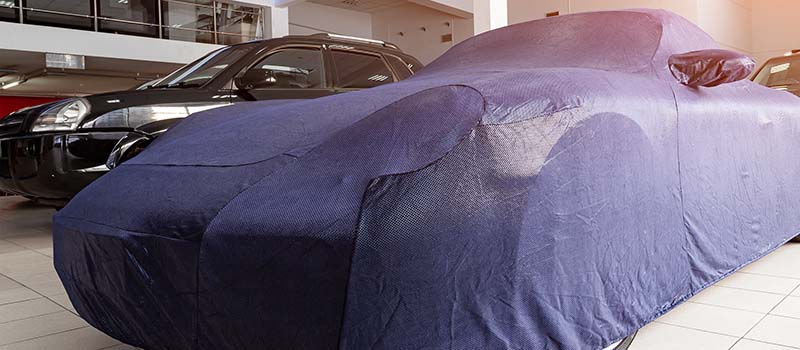Tips For Long-Term Car Storage
Tips For Long-Term Car Storage

Tips For Long-Term Car Storage
Prepping your vehicle
If you’re getting ready to store your vehicle for an extended period, you’ll want to take a few maintenance-related steps to save you from potential costly damage. It might sound counterintuitive, but you should be sure to fill up all of your vehicle’s fluids, including fuel, antifreeze, brake fluid and windshield wiper fluid. If there’s empty space inside your vehicle’s fluid tanks, condensation can form, which can lead to corrosion over time. Depending on how long you’re planning to store your vehicle, you may also want to consider using a fuel stabilizer, which helps to extend the life of your fuel, as well as protect your gas tank and fuel lines.
You should also clean the vehicle, both inside and out. Remove all trash and crumbs from the interior, which could attract insects or other pests. To prevent dampness from settling into the interior, consider placing silica gel packs or other dryness-promoting products inside your car while it’s in storage. If you’re storing your vehicle outdoors, consider blocking off potential entry points for rodents and insects. For example, cover your exhaust pipe with aluminum foil or stuff it with steel wool. Just be sure to remember to remove it before attempting to start your vehicle again!
Finding the right storage space
Where you store your vehicle can have a significant impact on its condition, so be sure to find a safe storage space that’s right for you. Unless you own a valuable classic car, you may not need to store your vehicle in a climate-controlled space, but it’s best to avoid locations where excess moisture occurs, causing rust to develop over time. Ideally, you’ll also want to store your vehicle on a level asphalt or concrete surface, as storing it on gravel or grass can expose your vehicle to additional moisture, as well as allowing it to sink into the ground over time. Choose a weatherproof cover that’s right for your vehicle to protect the paint from the elements (including tree sap, snow or ice buildup).
If you do choose to store your vehicle at an indoor facility, rather than in your own building or garage, be sure to find a safe, reputable place to do so. Some facilities offer features like a gated premises, video surveillance and personnel who can start your vehicle’s engine every so often.
Check for additional savings
Depending on where you’re storing your vehicle and for how long, you may be able to trim some of your insurance costs. If your vehicle is stored in a safe location and will not be driven for some time, you may want to consider suspending the collision and liability portions of your insurance coverage. Keep in mind that if you are still making payments on your vehicle, you may be required to have both collision and comprehensive coverage in order to continue with financing. In addition, some states require you to file an affidavit of non-use with the department of motor vehicles in order to avoid suspension of your registration for lack of insurance.
To make sure you have the right coverage to protect your vehicle while it is in storage, be sure to reach out to your local agent. They will be happy to answer all of your questions, and will help you get the level of protection that fits your individual needs, no matter what you’re driving!
